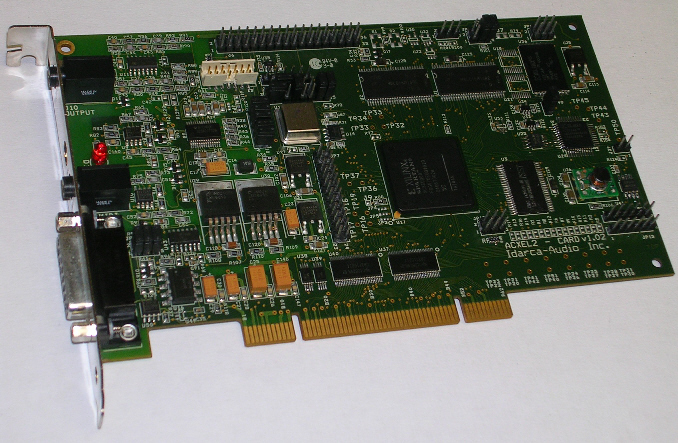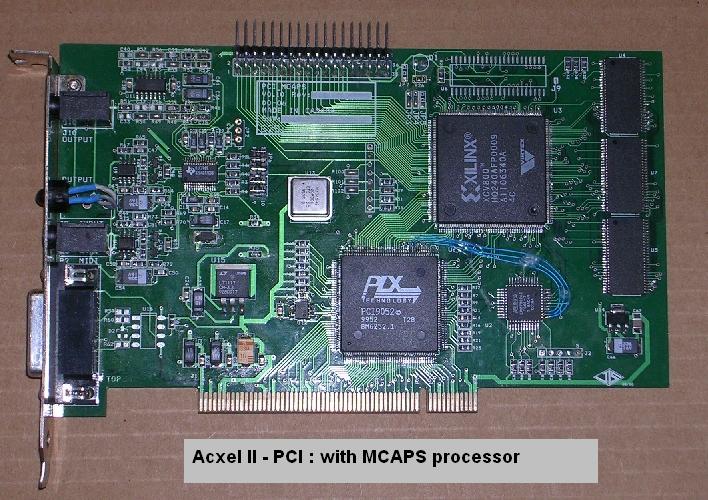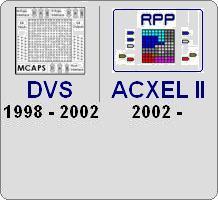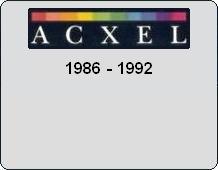RPP PCI boards platforms (2002, 2009 - picture, 2012):
RPP Processor (2002 - 2009) was installed on a board of the same type as the MCAPS. The objective of RPP is to extend the capacities and performances to the maximum, for that the RPP architecture is completely redesigned
Capacity: 256 synthesis cells (2008), 256 processing cells (2009), 1024 processing cells (2012).
Audio Mode - Additive synthesis and full Acxelink (Amplitudes, Frequencies, Phases, Filter, Morphing/Symmetry)
Processing Mode - Benchmarked in video codecs and RF Physical layers.
RPP Potential use: Sound and applications on high performances accelerators (Video, sound processing and video).
- Processor Generalization 2002 - 2004
- Processing elements extensions 2008 - 2009.
- Structure extensions 2012
Transfer on specialized integrated circuits possible (ASIC) next steps
MCAPS PCI board (2000):
MCAPS Processor was initially validated on ISA board (PC) and then incorporated on the DVS. Then the same MCAPS was put on a PCI card for use as sound board.
Capacity: 64 synthesis cells
Modes: Additive synthesis and basic Acxelink (Amplitudes, frequencies)
Potential use of the MCAPS: On Sound only
After the tests on the DVS the same editor was taken for use on boards with the MCAPS PCI (2000) then on RPP PCI(2002).
RPP was developed (2002 - 2008) to extend the possibilities of the MCAPS, and to generalize the field of uses of it.
RPP extreme performances on the Acxel 2 in Audio domain was also benchmarked on Video Codecs and RF physical layers in particular (2008 - ).




























